Minimalist gardens may sound plain and boring to some; others think they are simple and stylish. Practically, minimalist gardens can be perfect as family gardens. Taking their cue from decluttered houses, they offer space that works for our lifestyles.
Minimalist gardening is all about space and how it is used. Following the trends in interior design, it tends to involve a restricted palette of hard landscaping materials and plants, combined with a design of bold, simple lines.
Professionally designed classic minimalist gardens may be financially out of reach for most householders, but you can get similar results by following the few simples rules below.
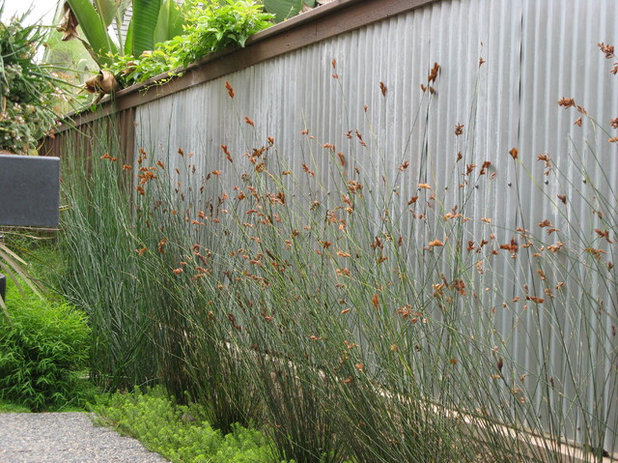
debora carl landscape design
Set BoundariesMinimalism in the garden should should start with boundaries. Because minimalist design is about restriction, especially in the use of color within the overall design, the choice of what is used — be it fencing, walls or hedges — is vital to creating a successful scheme.
Neutral colors tend to be the most popular, as they are calming and understated. Unpainted, galvanized, corrugated metal panels have been used here; the natural furrows and ridges create texture and shadow.
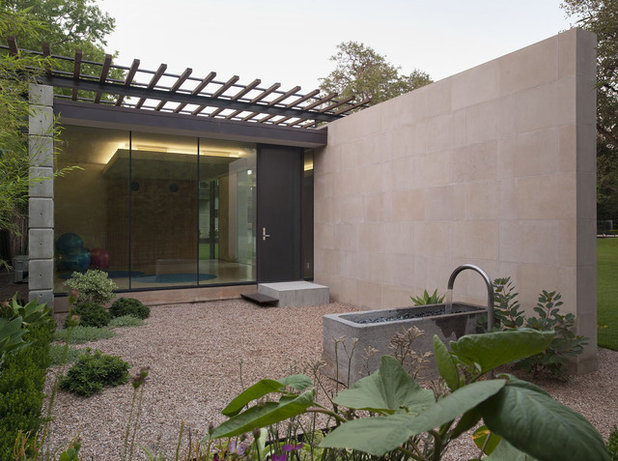
Webber + Studio, Architects
This wall of limestone blocks gives us perhaps the best solution for creating the simplest minimalist boundary. It has a great presence in the garden while linking with the gravel floor.
The wall's size and smooth surface allow it to act as a movie screen or a place for projecting garden lighting. The starkness of this style of wall also allows great contrasts to be created when it's used as a background for a strong architectural planting.
If the blocks you use are not smooth or your preferred color, they can always be rendered and painted, but don't use capping stones along the top, as this will spoil the clean lines you are looking for.
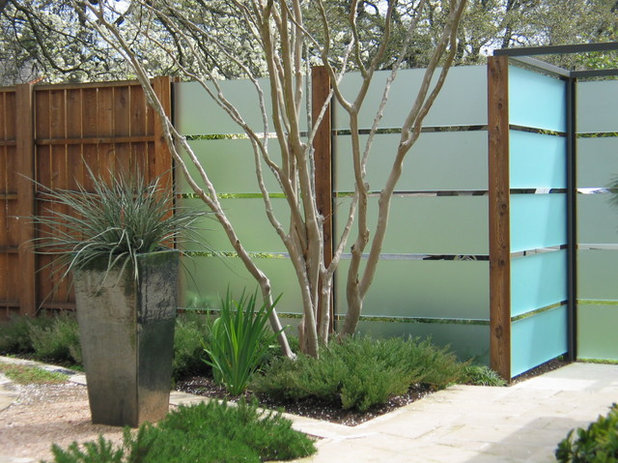
Tim Cuppett Architects
Not so simple to install yourself, these glass panels allow light into the garden yet maintain neutral colors on the boundaries. The timber posts holding the panels allow the hardness of the glass to link with the adjacent timber fencing.
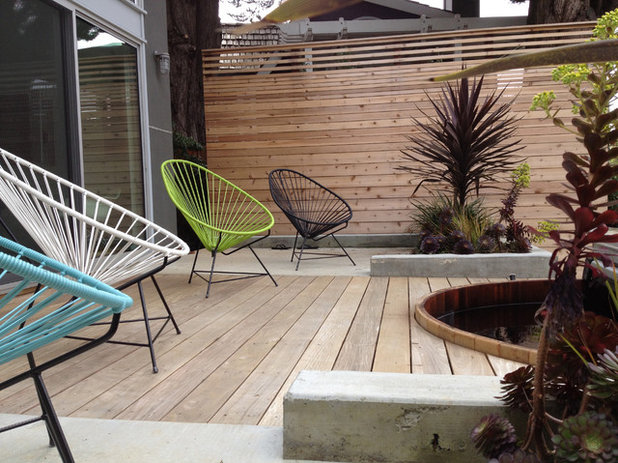
Costello Kennedy Landscape Architecture
Limit MaterialsLimiting the number of hardscaping materials, as well as colors, is important to achieve a clean, simple look — too many and the scheme will feel fussy. Here we see how using the same tone of timber for the fencing and decking creates a harmonious scheme.
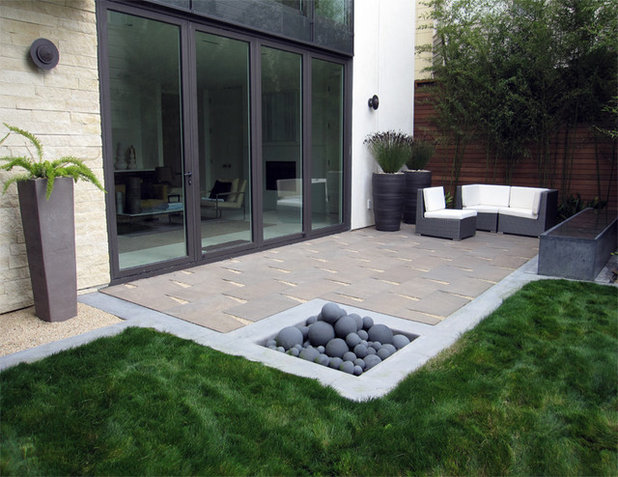
Shades Of Green Landscape Architecture
Paving may seem to be the obvious choice for flooring in a minimalist garden, yet it must be chosen and laid with skill to achieve the type of perfect finish we see here. The warm gray finish of the paving creates a wonderful background for the darker gray detailing provided by the seating, planted containers and window frames.
This attention to detail can make creating a professional-looking minimalist design easier than you might think.
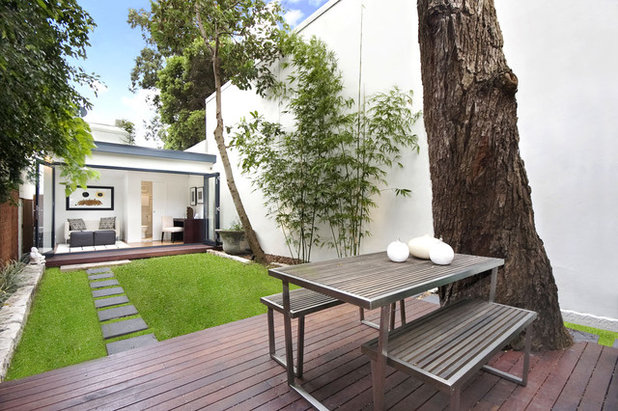 Move Grass Away From Its Traditional Setting
Move Grass Away From Its Traditional SettingNormally a mainstay of traditional garden design, grass can be a great surface material in simple minimalist gardens. Whether it is closely cropped or allowed to grow freely, its creates a neutral base that easily combines with other natural surfaces, such as stone and wood.
In a minimalist setting, lay grass on ground carefully prepared and leveled to create a finished lawn that almost resembles carpet. Or use one of the excellent artificial grasses available; some versions even include faux dead thatch.
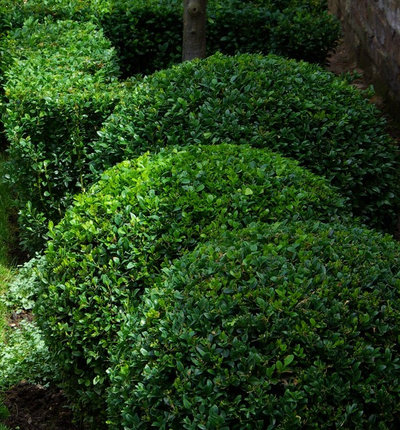
Laara Copley-Smith Garden & Landscape Design
Use a Limited Plant PaletteThe need for plants in this style of garden can be minimal, yet they are also key to any design. Plants help soften the design, bringing relief from the strictures of the hard landscaping.
Try to restrict your plantings to no more than three species, repeated if necessary within the scheme. Not only will a limited palette look good, but it will also make maintenance much easier. Boxwood (
Buxus spp) is a favorite choice for minimalist gardens. Its evergreen foliage provides year-round monochromatic color, and it can be closely clipped into strong, crisp shapes.
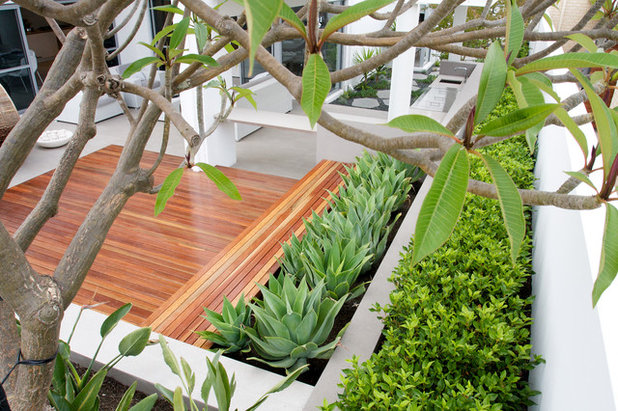
Tim Davies Landscaping
Create garden harmony and unity by including numerous types of plants all in the same color, but with different shades and tones. Colors favored by designers include neutral grays and blacks, but some prefer more dominant colors, such as acid green, to contrast the neutral coloring of the hardscaping.
Suggestions for monochromatic plantings:
- Black: Phormium 'Platt's Black', Ophiopogon planiscapus 'Nigrescens', Phyllostachys nigra
- Gray: Perovskia 'Blue Spire', Santolina chamaecyparissus, Artemesia 'Powis Castle'
- Acid green: Euphorbia schillingii, Euphorbia polychroma, Alchemilla mollis
See more plants with gray and acid-green foliage.
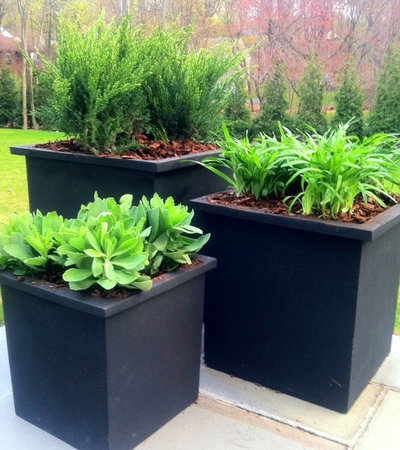
Samarotto Design Group
Unify Your Scheme With Grouped PlantersUse a cohesive color scheme, both in the choice of containers and the use of a restricted palette. The containers should be contemporary, with a clean, stylish finish.
Browse contemporary planters
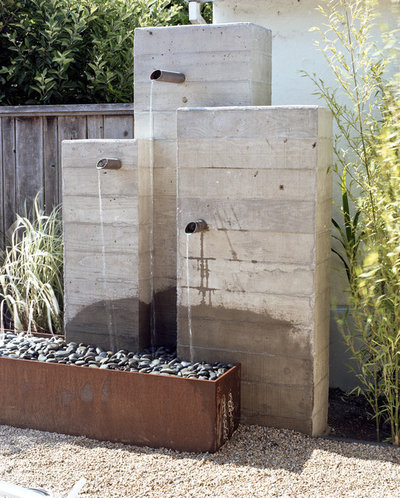
WA Design Architects
Add Water for Controlled Sound and MovementWater features in minimalist gardens tend to be understated. They should be part of the overall scheme rather than added ornamentation. Even with the movement they provide, they should create a feeling of calm.
This simple water feature, with an almost industrial feel, is made of board-formed concrete.
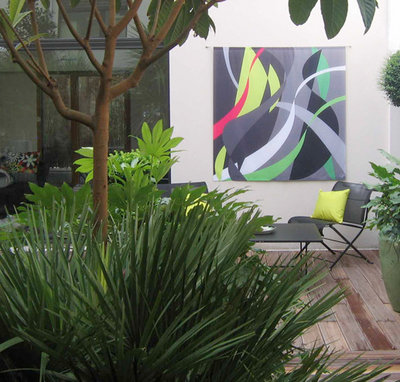
deborah Sommers
A minimalist garden needs to have a strong line and a clear purpose, beautifully executed and detailed. It is not easy to get right; there is no room for mistakes or poor workmanship — it has to be spot on.
But get it right and you can end up with a tranquil, low-maintenance garden that is a perfect antidote to the stresses of modern life, with space for the whole family.





